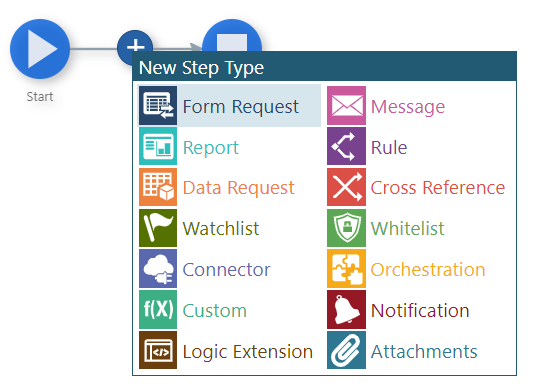Understanding the Orchestrator Studio and Orchestrations
Orchestrator Studio 9.2.4 is the latest version which requires a minimum of EnterpriseOne Tools 9.2.4. If you have not installed Orchestrator Studio 9.2.4, see Getting Started chapter in this guide.
For instructions for using prior versions of the Orchestrator Studio, see the JD Edwards EnterpriseOne Tools Orchestrator Guide for Studio Version 8 and Prior.
The Orchestrator Studio is a web-based application for creating orchestrations and the components that comprise an orchestration. The JD Edwards EnterpriseOne Orchestrator processes these components when executing an orchestration instance on the AIS Server.
Use the Orchestrator Studio to create the following components:
Orchestrations. An orchestration is the master component that provides a unique name for an orchestration process. The orchestration is where you define the inputs or the expected incoming data for the orchestration. It also includes orchestration steps, which are invocations to the other components that are described in this list. When the Orchestrator invokes an orchestration, it processes the steps that are defined in the orchestration.
Notifications. A notification is a process that can run independent of an orchestration. It enables the system to notify users of business events in real time. The notification can contain boilerplate text and a shortcut to an EnterpriseOne application and can be configured to execute a Watchlist or an orchestration.
Form Requests. A service request to perform a business transaction or query data in EnterpriseOne.
Data Requests. A service request to retrieve values from an EnterpriseOne table or business view.
Reports. A service request to invoke an EnterpriseOne report.
Watchlists. A service request to retrieve Watchlist data from EnterpriseOne.
Connectors. A service request to invoke a REST service, database, a notification, or another orchestration.
Connections. A connector service requests to provide a secure access to external resources, such as a REST service, database, or an orchestration or notification on another EnterpriseOne system
Custom Requests. A custom service request to execute a custom process using custom Java or Groovy. Starting with Tools 9.2.4.3, you can call a business function directly from an orchestration.
Messages. A request to send a message about a transaction to EnterpriseOne users or external users.
Rules. A set of conditions against which the input to the orchestration is evaluated to produce a true or false state. A false outcome or a true outcome for a rule can invoke further orchestration steps. You can also nest rules, a process through which an outcome of one rule can invoke a different rule, to produce complex evaluations. You can also use custom Java to define rules.
Starting with Tools 9.2.8.3, you can add a While step to repeat certain steps while a particular condition is met based on an existing rule. See Adding the While Step.
Cross References. A set of data relationships that map third-party values to EnterpriseOne values. For example, a serial number of a device can be cross-referenced to a JD Edwards EnterpriseOne Equipment Number when the device is used in service requests.
White Lists. A white list contains an inclusive list of values that are permitted in the orchestration and terminates the orchestration process if the data is not recognized.
Schedules. A schedule defines how often the system executes an orchestration or a notification. You can define a schedule by using minutes, hours, days, or a Cron string (for example, every Tuesday at 2:00 pm). You can attach the same schedule to multiple components.
-
Attachments. Attachments are used to automate EnterpriseOne transactions by including the options to manage text attachments, and upload or download file attachments (media objects) in transactions.
-
Logic Extensions. Using logic extensions, you can create business logic to perform operations such as string manipulation, arithmetic calculations, conditions, loops, and even table I/O.
-
Workflow.Using this web-based user interface, you can design and configure JD Edwards EnterpriseOne workflow processes with minimal dependency on the development client.
This graphic shows the list of the steps you can add to an orchestration. Each step in an orchestration represents one of the components (except Pause and While) listed above.
Starting with Tools Release 9.2.8.3, when you define your orchestration as Stateful, the Pause step is available in the New Step Type window.
